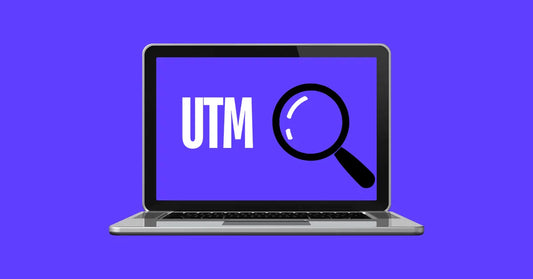So often, we use digital marketing as a ubiquitous term. In reality, there are many types of digital marketing, and the channels and capabilities of each type are growing every day.
One overlooked digital marketing strategy is performance marketing. With performance marketing, advertisers only pay when specific actions occur. For example, when a viewer clicks through to their page or makes a purchase.
In this blog, we’ll take a deep dive into performance marketing: how it works, why you should use it, and what channels offer the most bang for your buck.
What is Performance Marketing?
Performance marketing is a digital marketing strategy that’s driven by results. It’s ideal for companies that are looking to reach their audience at scale, because payment is based on how users interact with the content.
OR,
Performance marketing refers to a form of digital marketing in which brands only pay marketing service providers after their business objectives have been met or when specific actions have been taken, such as a click, sale, or lead. In other words, it is performance-based marketing.
Performance marketing works when advertisers connect with either agencies or publishers to design and place advertisements for their company on any number of performance marketing channels — social media, search engines, videos, embedded web content, and more. Instead of paying for an advertisement in the traditional way, these advertisers pay based on how well their ad performs, by measuring number of clicks, impressions, shares, or sales.
How Performance Marketing Works
Advertisers put their ads on a given channel (see more on top performance marketing channels below), and then pay based on how that ad performs. There are a few different ways to pay when it comes to performance marketing:
1. Cost Per Click (CPC)
Advertisers pay based on the number of times their ad is clicked on. This is a good way to drive traffic to your site.
2. Cost Per Impression (CPM)
Impressions are essentially views of your ad. With CPM, you pay for every thousand views (so if 25,000 people view your ad, for example, you’d pay your base rate times 25).
3. Cost Per Sales (CPS)
With CPS, you only pay when you make a sale that was driven by an ad. This system is also commonly used in affiliate marketing.
4. Cost Per Leads (CPL)
Much like cost per sale, with CPL you pay when someone signs up for something, like an email newsletter or webinar. CPL generates leads, so you can follow up with customers and drive sales.
5. Cost Per Acquisition (CPA)
Cost per acquisition is similar to CPL and CPS but is more general. With this structure, advertisers pay when consumers complete a specific action (which could include making a sale, sharing their contact information, visiting your blog, etc.).
Top Performance Marketing Channels
What channels work best when it comes to performance marketing? There are five types of performance marketing that agencies and advertisers use to drive traffic:
1. Banner (Display) Ads
If you’ve been online, you’ve probably seen plenty of display ads recently. These ads appear on the side of your Facebook newsfeed, or at the top or bottom of that news web page you just visited. Though display ads are slowly losing their appeal due to the increasing popularity of ad blockers and what experts call banner blindness, many companies are still finding success with display ads that utilize interactive content, videos, and engaging graphic design.
2. Native Advertising
Native advertising takes advantage of the natural appearance of a web page or site to promote sponsored content. For example, sponsored videos might appear in the “Watch Next” section of a YouTube page. Native ads are also popular on ecommerce sites — you may have seen them on Facebook Marketplace, for instance. Native advertising works because it allows your sponsored content to live seamlessly beside other kinds of organic content. Often, users won’t differentiate between these kinds of content, allowing you to promote your brand in a way that feels natural.
3. Content Marketing
Content marketing is all about educating your audience. According to OmniVirt, it also costs 62 percent less than outbound marketing, and generates three times as many leads. With content marketing, the focus is on providing useful information to users and putting your brand in context. For example, a vitamin company might write a series of informative blog posts about the benefits of probiotics, with a link back to the probiotics they sell. Content marketing is a channel that can include blog posts, case studies, e-books, and more.
4. Social Media
For performance marketers, social media is a haven. It offers not only the opportunity to reach users and drive them to your site — users can also share your sponsored content organically, extending your reach far beyond the original post. Facebook has the most extensive list of services for performance marketers, but other platforms like LinkedIn, Instagram, and Twitter also offer many opportunities to reach new customers.
5. Search Engine Marketing (SEM)
Most online research is done via search engines, and that means having a site that is optimized for search engine marketing (SEM) is essential. In terms of performance marketing, the focus is primarily on cost-per click (CPC), especially for paid advertising. For organic SEM, many performance marketers rely on content marketing and SEO-optimized landing pages.
Benefits of Performance Marketing
With the future of digital marketing looking more promising each year, using performance marketing channels can help you scale your advertising efforts to meet the needs of your company without breaking the bank.
Performance marketing is a creative and effective way to diversify your audience and expand your reach, all while capturing valuable data. And the benefits don’t stop there. When you embrace the full functionality of performance marketing, from native and affiliate advertising to sponsored social media content, you’ll find it's easier than ever to grow your business.
What is Performance Based Advertising?
Performance-based advertising is a method of digital advertising where the advertiser pays for specific actions taken by users, such as clicking on an ad, making a purchase, or signing up for a service. This differs from traditional advertising, such as display advertising, where the advertiser pays for ad impressions regardless of whether the user takes action. Marketers often use performance-based advertising to drive more measurable results and optimize their advertising spend.
How Performance Advertising Works?
- Define Performance Goals: The advertiser determines the specific performance goals they want to achieve through the advertising campaign, such as increasing website traffic, generating leads, or making sales.
- Target Audience: The advertiser identifies the target audience they want to reach with the ad campaign, including demographic information, interests, and location.
- Choose Advertising Channels: The advertiser selects the digital advertising channels they want to use to reach their target audiences, such as search engines, social media, or websites.
- Create Ad Content: The advertiser creates the ad content, including text, images, or videos. The ad should be designed to effectively communicate the message and encourage users to take the desired action.
- Set Bid and Budget: The advertiser sets a bid for each desired action and a budget for the entire ad campaign. The bid is the amount the advertiser is willing to pay for each desired action, and the budget is the total amount of money the advertiser is willing to spend on the ad campaign.
- Launch Campaign: The advertiser launches the ad campaign and displays the ads to the target audience through the chosen advertising channels.
- Track Performance: The advertiser tracks the ad campaign's performance and analyzes the results to determine its effectiveness. This may include monitoring the number of clicks, conversions, and overall ROI.
- Optimize Campaign: Based on the results, the advertiser may adjust the ad campaign to improve performance, such as changing the ad content, targeting, or bid and budget.
These steps provide a general overview of the performance advertising process, and the specifics may vary depending on the advertising platform or network used.




